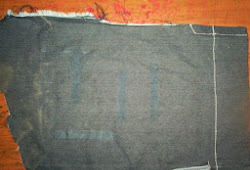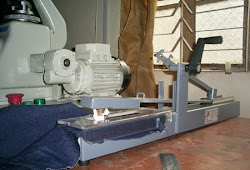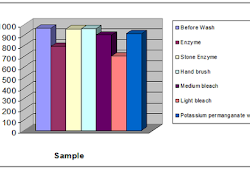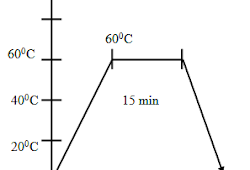Now You Know Garments Washing Techniques Used in Bangladesh (Part-2)
Tuesday, 22 January 2019
Edit
Garments Washing Techniques Used in Bangladesh (Part-2)
Mayedul Islam
Merchandiser at Fashion Xpress Buying House.
Badda, Dhaka, Bangladesh.
Former Assistant Chemist
Ha-Meem Washing
Email: mayedul.islam66@gmail.com
Merchandiser at Fashion Xpress Buying House.
Badda, Dhaka, Bangladesh.
Former Assistant Chemist
Ha-Meem Washing
Email: mayedul.islam66@gmail.com
GARMENT WASH
Indigo jeans were once the only item processed by the garment wash method, but this is no longer the case. A wide variety of different types of woven and knit fabrics dyed by different systems are now used in apparel that is garment washed before retail distribution. Emphasis is on comfort and softness. Also, some fashion trends such as the broken-in look and worn/faded seams that can only be achieved through garment processing.
PROCEDURE
Garments can be inverted to minimize unwanted abrasion streaks (especially useful when preset creases are present).
↓
Load machine with garments.
↓
Desize with alpha amylase enzyme and detergent.
↓
Rinse.
↓
Fill machine with water and heat to 60◦C. The liquor ratio can range from 10:1 to 20:1. A number of synthetic detergents can be used. Also, alkaline products such as soda ash or caustic soda can be added in amounts ranging from 0.5 to 2.0 grams/liter, dependent upon the particular dyestuff used.
↓
Wash/tumble action for 20-60 minutes, depending upon desired effect.
↓
Drain and rinse.
↓
Apply softener.
↓
Tumble dry.
↓
Press, if required.
↓
Load machine with garments.
↓
Desize with alpha amylase enzyme and detergent.
↓
Rinse.
↓
Fill machine with water and heat to 60◦C. The liquor ratio can range from 10:1 to 20:1. A number of synthetic detergents can be used. Also, alkaline products such as soda ash or caustic soda can be added in amounts ranging from 0.5 to 2.0 grams/liter, dependent upon the particular dyestuff used.
↓
Wash/tumble action for 20-60 minutes, depending upon desired effect.
↓
Drain and rinse.
↓
Apply softener.
↓
Tumble dry.
↓
Press, if required.
STONE WASH
In order to accelerate the garment wash effect and to give garments an even more unique appearance and softer hand, abrasive stones were introduced to the wash bath. A variety of natural and synthetic stones are available for stone washing. As the stones are used, they slowly disintegrate, reducing the stonewash effect over a period of time. The stones not only abrade the fabric but also gradually abrade the inside of the rotary drum. A machine used for stone washing should not be used to dye delicate articles .
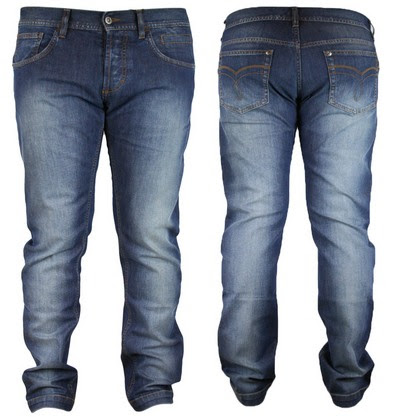 |
| Stone wash |
- Pumice rock.
- Volcanic rock.
- Manmade substrates.
- Hardness.
- Size.
- Shape.
- Porosity.
- Dusting ability.
- Large, hard stones which last longer for heavy fabrics
- Smaller, softer stones for lightweight and more delicate fabrics
- Ratio of stone weight to fabric weight = 2:1 up to 3:l
Load stones into machine.
↓
Load garments into machine (ratio usually 0.5 - 3.0 part weight stones:1 part weight garments).
↓
Desize with alpha amylase enzyme and detergent.
↓
Liquor ratio approximately (5-8):1.
↓
Rinse.
↓
Refill and tumble with stones 30 to 90 minutes, depending upon desired effect at 50-70◦C. Scouring additives can also be used.
↓
Drain. Separate garments from stones.
↓
Rinse.
↓
Apply softener (garments can be transferred to another machine for softening).
↓
Extract and unload.
↓
Tumble dry.
↓
Press, if required.
↓
Load garments into machine (ratio usually 0.5 - 3.0 part weight stones:1 part weight garments).
↓
Desize with alpha amylase enzyme and detergent.
↓
Liquor ratio approximately (5-8):1.
↓
Rinse.
↓
Refill and tumble with stones 30 to 90 minutes, depending upon desired effect at 50-70◦C. Scouring additives can also be used.
↓
Drain. Separate garments from stones.
↓
Rinse.
↓
Apply softener (garments can be transferred to another machine for softening).
↓
Extract and unload.
↓
Tumble dry.
↓
Press, if required.
Softeners and/or lubricants can be added during steps three and five to reduce creasing potential. Steps 8, 9, and 10 may vary depending upon garments quality.
NOTES: Back staining or color deposition can be reduced by
- adding dispersant suspension agent to wash cycle
- intermediate replacement of wash liquor
- use of alkaline detergent (sodium per-borate with optical brightener as an after wash)
To overcome the shortcoming of pumice stones, synthetic stones have been developed. These are made of abrasive material such as silicate, plastic, rubber or Portland cement.
The advantages of using such type of product are:-
- All major problems associated with the use of volcanic grade pumice stone can be overcome.
- Durability of such product is much higher and can be used repeatedly from 50-300 cycle depending upon type of synthetic stone.
- Reproducibility of washing is manageable.
- As stone discharge of the process is very less, therefore making process is economical and ecological.
- Less damage of machine and garments
By incorporating chlorine in the stonewash procedure, a color reduction of the indigo (or other chlorine sensitive dyestuff) is obtained. It is very important that any residual chlorine be removed before drying to prevent fiber degradation. This is accomplished by using an antichlor step with sodium bisulfite or hydrogen peroxide.
PROCEDURE
Load stones into machine.
↓
Load garments into machine (ratio usually 0.5 - 3.0 part stones:1 part garments).
↓
Desize with alpha amylase enzyme and detergent (liquor ratio approximately 10:1).
↓
Rinse.
↓
*5. Refill and add sodium or calcium hypochlorite. (Heat to 55◦C.)
↓
Tumble 15 minutes.
↓
Add second portion of sodium or calcium hypochlorite.
↓
Tumble 15 minutes, maintaining temperature of 55◦C.
↓
Drain.
↓
Rinse well.
↓
Antichlor with sodium bisulfite or hydrogen peroxide.
↓
Drain. Separate garments from stones.
↓
Rinse well.
↓
Apply softener. (Garments can be transferred to another machine).
↓
Extract and unload.
↓
Tumble dry.
↓
Press, if required.
↓
Load garments into machine (ratio usually 0.5 - 3.0 part stones:1 part garments).
↓
Desize with alpha amylase enzyme and detergent (liquor ratio approximately 10:1).
↓
Rinse.
↓
*5. Refill and add sodium or calcium hypochlorite. (Heat to 55◦C.)
↓
Tumble 15 minutes.
↓
Add second portion of sodium or calcium hypochlorite.
↓
Tumble 15 minutes, maintaining temperature of 55◦C.
↓
Drain.
↓
Rinse well.
↓
Antichlor with sodium bisulfite or hydrogen peroxide.
↓
Drain. Separate garments from stones.
↓
Rinse well.
↓
Apply softener. (Garments can be transferred to another machine).
↓
Extract and unload.
↓
Tumble dry.
↓
Press, if required.
[*Amount of sodium or calcium hypochlorite required will vary depending upon desired level of bleach down and the sensitivity of the color to chlorine. Each addition can range from 0.075% to 0.225% available chlorine. pH should be kept above 9.0, preferably 10.5-11.0. This is accomplished with the addition of soda ash with each addition of hypochlorite.]
CELLULASE ENZYME
Cellulase enzymes have gained acceptance in the garment wash industry as a means to achieve a wash down appearance without the use of stones or with reduced quantities of stones Stones are not only abrasive to garments but also to the equipments. Stones can create sludge in waste treatment systems. Cellulase enzyme is a particular strain of enzyme derived from microorganisms. Selective to cotton form of cellulose and not to starch. Once the reaction takes place, They attack (1–4) beta glucoside linkages resulting in reduced molecular weight and therefore removal of surface fiber (the mechanical action between garments and equipment as well as between garments fabric weaker fibers resulting a cleaner, smoother surface. Stones may be added to enhance the abrasion).
MAIN FACTORS THAT SHOULD CONTROL IN ENZYME WASHING:
- PH
- Temperature
- Time
- Concentration
- Mechanical action
Load garments (addition of stones optional)
↓
Desize for starch (alpha-amalase enzyme or oxidative desize)
↓
Rinse
↓
Adjust pH to 4.5 - 5.0 with acetic acid or a buffer system
↓
Heat to 50 to 60 C ( 122 - 140 F)
↓
Add cellulase enzyme
↓
Tumble for 30 - 60 minutes
↓
Deactivation step- rinse hot > 65 C ( 150 F)
↓
Rinse cold
↓
Soften and/or optically brighten
↓
Tumble dry
↓
Deactivation of the cellulase enzyme to prevent further weight reduction can be done by temperatures in excess of 60 C (140 F) and/or at a pH higher than 5.0.
↓
Cellulase enzymes may be used as an after treatment to clean up surfaces of Garments which have become fuzzy during garment dyeing.
↓
The shade of the dyed garments may change which requires preliminary lab work to determine if this will be a problem or not.
↓
Desize for starch (alpha-amalase enzyme or oxidative desize)
↓
Rinse
↓
Adjust pH to 4.5 - 5.0 with acetic acid or a buffer system
↓
Heat to 50 to 60 C ( 122 - 140 F)
↓
Add cellulase enzyme
↓
Tumble for 30 - 60 minutes
↓
Deactivation step- rinse hot > 65 C ( 150 F)
↓
Rinse cold
↓
Soften and/or optically brighten
↓
Tumble dry
↓
Deactivation of the cellulase enzyme to prevent further weight reduction can be done by temperatures in excess of 60 C (140 F) and/or at a pH higher than 5.0.
↓
Cellulase enzymes may be used as an after treatment to clean up surfaces of Garments which have become fuzzy during garment dyeing.
↓
The shade of the dyed garments may change which requires preliminary lab work to determine if this will be a problem or not.
ACID WASH
- Also known as ICE WASH, SNOW WASH, WHITE WASH, ETC.
- Complete discharge or removal of color possible
- Uses pumice rocks, bleaching agents and dyestuffs that are sensitive to the bleaching agents.
- Porous rocks that have a medium to high dusting capability are soaked in solutions of bleaching agents which are used as a vehicle to deposit a chemical on garments to strip the color and produces a frosted appearance. Indigo and selected sulfur dyes are currently the most popular candidates for this procedure.
Soak stones in solutions of potassium permanganate for 1-2 hours. Concentrations ranging from 1.5% to 5% are being used commercially. (5% to 10% sodium hypochlorite can be substituted.)
↓
Stones should be drained of excess liquor. This can be accomplished by placing stones in net or mesh fabric prior to soaking. Then the stones can be removed and the excess drained off. Trials should be conducted to determine the best method for achieving desired effects.
↓
Place stones and garments in machine (garments should be scoured and/or desized and dry or slightly damp).
↓
Tumble for 10-30 minutes or until desired effects are achieved. Results are dependent upon dyestuff, fabric, concentration of chemicals, stones, additives, and equipment.
↓
*If potassium permanganate is used, manganese dioxide will form (a brown/orange color) and must be removed by treatment with sodium bisulfate, hydroxylamine sulfate, or acidified hydrogen peroxide as the reducing agent. Fill the machine with water and add 1-5 g/l of the reducing agent. Heat to 50◦C and run for 20 minutes. When sodium hypochlorite is used, the residual chlorine should be removed with sodium bisulfate or hydrogen peroxide. Adding jeans to machine already charged with afterwash chemicals will increase contrast.
↓
Rinse well.
↓
Apply softener.
↓
Tumble dry.
↓
Ironing (if required)
↓
Stones should be drained of excess liquor. This can be accomplished by placing stones in net or mesh fabric prior to soaking. Then the stones can be removed and the excess drained off. Trials should be conducted to determine the best method for achieving desired effects.
↓
Place stones and garments in machine (garments should be scoured and/or desized and dry or slightly damp).
↓
Tumble for 10-30 minutes or until desired effects are achieved. Results are dependent upon dyestuff, fabric, concentration of chemicals, stones, additives, and equipment.
↓
*If potassium permanganate is used, manganese dioxide will form (a brown/orange color) and must be removed by treatment with sodium bisulfate, hydroxylamine sulfate, or acidified hydrogen peroxide as the reducing agent. Fill the machine with water and add 1-5 g/l of the reducing agent. Heat to 50◦C and run for 20 minutes. When sodium hypochlorite is used, the residual chlorine should be removed with sodium bisulfate or hydrogen peroxide. Adding jeans to machine already charged with afterwash chemicals will increase contrast.
↓
Rinse well.
↓
Related:
↓
Tumble dry.
↓
Ironing (if required)
[* The selection of sodium hypochlorite versus potassium permanganate depends upon the dyestuff and desired effect]
QUICK WASH
Quick wash fabric is dyed with modified technique of dyeing, so that during wash cycle, indigo dye can be removed quickly, giving washed look at shorter washing cycle. This results in more economical washes i.e. low water consumption, less usage of chemicals, less time and retaining fabric strength.
DRY PROCESSES
SAND BLASTING
Sand blasting technique is based on blasting an abrasive material in granular, powdered or other form through a nozzle at very high speed and pressure onto specific areas of the garment surface to be treated to give the desired distressed/ abraded/used look.
ADVANTAGES OF SAND BLASTING PROCESS:-
- It is purely mechanical process, not using any chemicals.
- It is a water free process therefore no drying required.
- Variety of distressed or abraded looks possible.
- Any number of designs could be created by special techniques.
To give worn out effect, abraded look or used look, some mechanical processes have been developed. These are based on mechanical abrasion by which the indigo can be removed. Some of these processes are sueding, raising, emeresing, peaching and brushing.
ADVANTAGES OF THESE PROCESSES:-
- Control on the abrasion
- Different look on the garment can be achieved.
- All are dry process.
- Economical, ecological and environmental friendly.
By using this technique, the garment can be bleached. Bleaching of denim garment is done in washing machine with ozone dissolved in water. Denim garments can also be bleached or faded by using ozone gas in closed chamber. The advantages associated with this process are:
- Colour removal is possible without losing strength.
- This method is very simple and environmentally friendly because after laundering, ozonized water can easily be deozonized by UV radiation.
This technique is based on spraying the chemicals or pigments to get different effect on the garments. This can be done by using robotic spraying gun or by manual spray and followed by curing of the garment.
- It a water free process therefore zero effluent discharge.
- Less time consuming
- Different designs are possible
- Easy to use
- No adverse effect on fabric strength.
Rinse wash
↓
Pigment added as required
↓
Steam 70 c
↓
Time (10+15+20)
↓
Normal Wash
↓
Binder-2g/lit (70c-5min)
↓
Normal Wash
↓
Enzyme
↓
Acid pH-5
↓
Normal Wash
↓
Softener
↓
Hydro
↓
Dryer
↓
Finishing
↓
Pigment added as required
↓
Steam 70 c
↓
Time (10+15+20)
↓
Normal Wash
↓
Binder-2g/lit (70c-5min)
↓
Normal Wash
↓
Enzyme
↓
Acid pH-5
↓
Normal Wash
↓
Softener
↓
Hydro
↓
Dryer
↓
Finishing
TINTED DENIM
With increase in demand of tinted/ over dyed look on garment, garment processor is using an additional process of tinting/over dyeing, which is time consuming. It consumes large quantity of water and chemicals. It is also associated with the risk of patches and unevenness on garments. Now the denim fabric is also available in tinted form which saves processors time and risk.
RESULTS AND DISCUSSION
To assess the influence of different washing techniques on denim properties, changes in structural and certain physical mechanical properties were determined. Different washing methods make different influence on the denim thickness .Enzymes removed impurities and individual loose fiber ends and smoothing the surface, which caused the thinning. Softener precipitates on the yarns, therefore fabric thickness increase.
CONCLUSION
The investigation shows that the greatest influence on the change of garments properties was made by silicone softening. After this washing, the fabric shrinks most of all (till 5 %), which caused the considerable changes of structural properties From all the treatment, the enzyme washing made the greatest influence on the change of thickness, denim became the thinnest.
Washing with a chlorine solution mostly influenced the change of denim structural properties. This method of washing should be avoided due to its harmful effect on human health. Therefore, similar results obtained with simple softening or enzyme washing might be recommended.
Both visual and functional purpose of a garment may be assessed whereas selection of `a particular method of industrial washing influenced different fabric properties.
REFERENCES:
- BECK,DR.KEITH, ”Garment Dyeing & Finishing.” Fabric Evaluation. Available from
- http://en.wikipedia.org/wiki/Denim
- http://flvdirect.iamwired.net/websearch.php?search=garments+washing+techniques.
- http://www.thawornwat.com/
- http://www.p2pays.org/ref/12/11960.pdf.
- http://www.wisegeek.com/what-is-enzyme-washing.htm.
- http://www.ktu.lt/lt/mokslas/zurnalai/medz/medz0-87/17%20Textile...(pp.355-359).pdf
Sumber http://textilelearner.blogspot.com


